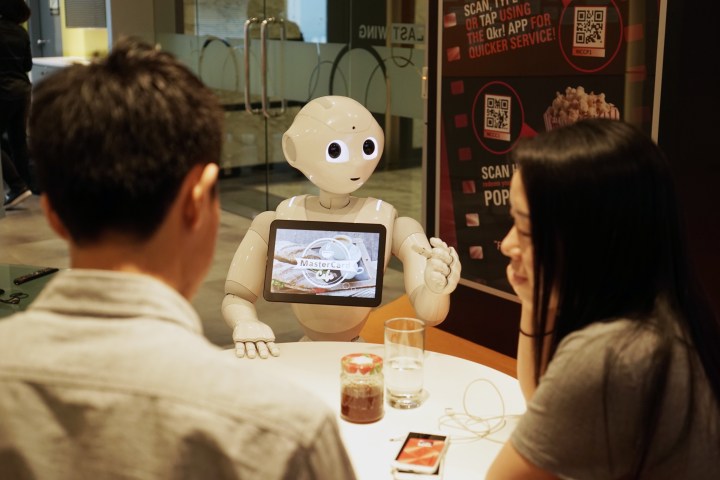
The robot has been deployed across Asia, particularly in Japan, for quite a while now, but its role largely revolves around offering information at booths and stores. But Pepper can now handle payments starting with pizza, thanks to a collaboration between MasterCard and Pizza Hut.
It’s all powered through MasterCard’s MasterPass app, Tobias Puehse, vice president of digital payments and labs at MasterCard, tells Digital Trends. All you need to do as you walk up to Pepper is pair your device to the robot. You can do that by just tapping on the Pepper icon in your MasterPass Wallet app or by scanning a QR code on the tablet held up by the robot.
MasterPass then provides your credentials to Pepper, so the robot will immediately start addressing you by name and can look at your previous purchases, if you have made that information available in your app preferences. Then you can go ahead and make your order, and Pepper can recommend promotional items to you, as well as provide you with supplemental information if you ask for it, such as the nutritional information about a sandwich.
“You would simply have to approve the transaction after you update your order,” Puehse said. “Pepper would then send that order request to your personal device and make sure that all of the payment is in a secure place, it’s on your device, and you have an e-receipt at the end of your transaction.”
It’s not MasterCard only, transactions can work with any credit or debit card that MasterPass accepts. It also works with retailer payment systems — for example, Pizza Hut will have a specific app that will help facilitate the transaction with Pepper. Pizza Hut Asia will be utilizing Pepper in its stores toward the end of 2016, allowing people to make orders and pay for them just by talking to the robot.
You’re still running transactions in your smartphones, so your financial information is secure, and all data that passes through Pepper is encrypted.
“We really see Pepper as a platform, as a digital conversational platform that is probably one of the first digital platforms that actually adopts to the human, instead of the human having to adopt to the platform,” Puehse said.
There are 14,000 Pepper units in Japan alone, and the robot is making its way to the U.S. soon. Recently, Softbank Robotics, the company behind Pepper, announced that the robot will support Google’s Android operating system.

